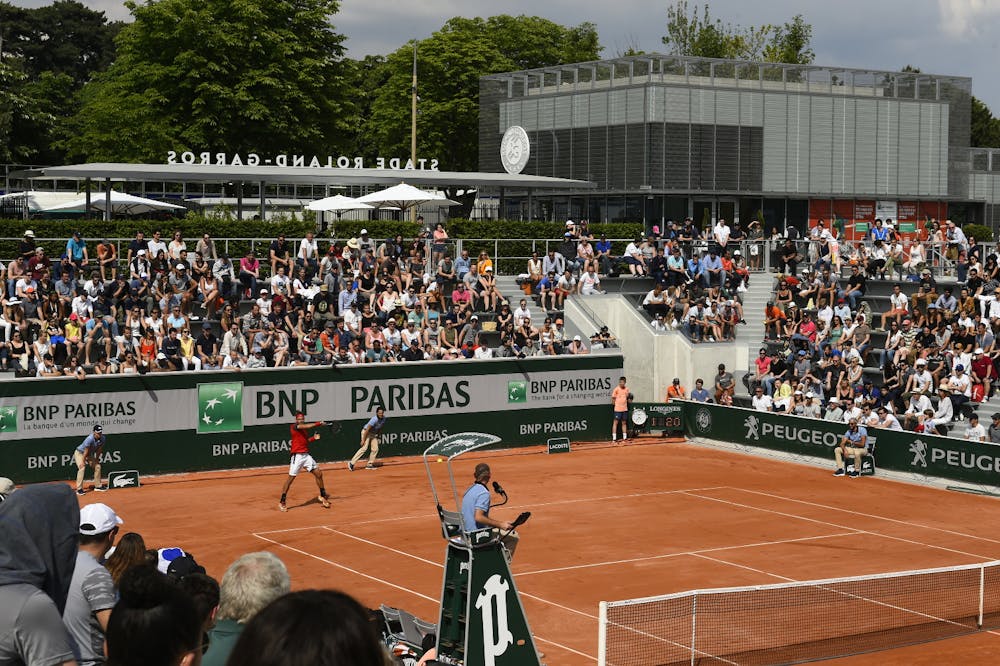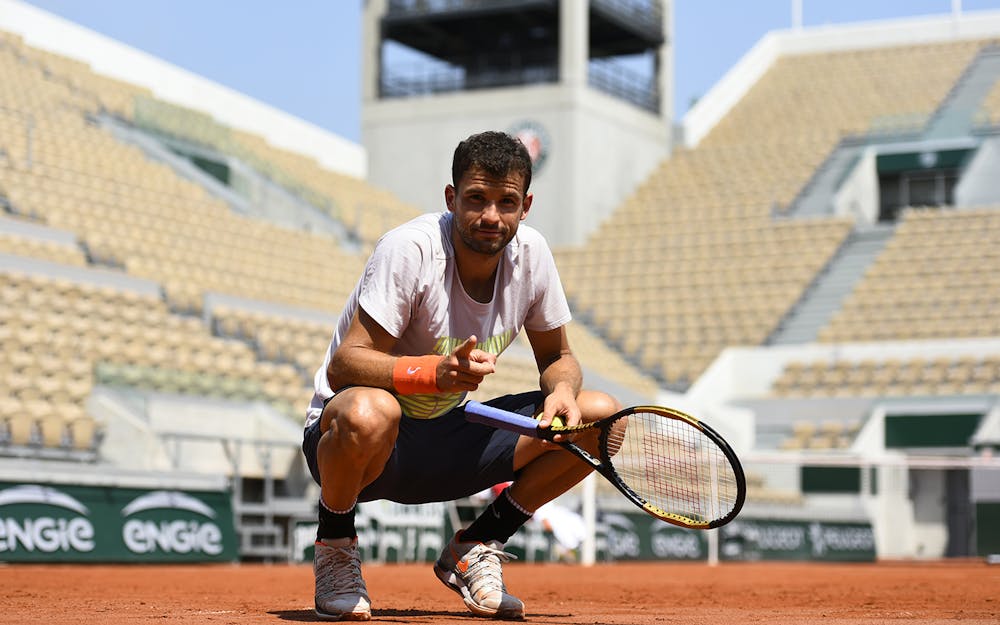Wafts of fresh paint beneath the stands of Court-Philippe-Chatrier give way to the scents of spring blooms among manicured foliage as tournament staff manoevre trolleys of scaffolding between show courts.
First glimpse of future-facing Roland-Garros
New courts, smart makeovers and fond farewells: redevelopment of Stade Roland-Garros is well under way.
 ©Philippe Montigny/FFT
©Philippe Montigny/FFTThey are the impending signs of Roland Garros about to hit full swing; a smattering of fans spilling between outside courts to catch a glimpse of pre-tournament qualifying.
Five-time quarter-finalist Tommy Robredo has just crashed out on the all-new Court No.18, a semi-sunken arena with bench seating capacity for 2200 spectators, making it the site’s fourth-largest court.
Spectators amble from the popular new showcourt at the far reaches of the grounds and weave their way back between groundsmen in the courtside alleys, eyeing the new taped off decking with umbrellas ready to be unfurled come Day 1 on Sunday beside Chatrier.
Roland Garros is in the midst of a massive redevelopment due for completion in 2020, and already the benefits to fans and players are tangible.
The most obvious signs of the huge overhaul are immediately visible upon passing through the sleek new entrance on Boulevard d’Auteuil, where the mesh façades of the cube-like Village complex stand as an impressive backdrop to two more new outside courts – No.7, with its 1500 seats, and No.9, with capacity for 550.
Former champion Francesca Schiavone was beginning her qualifying campaign in a bid to contest her 17th Roland Garros main draw on nearby court No.6.
The 37-year-old Italian and 36-year-old Robredo have not seen such dynamic changes to these grounds in their careers.
Both no doubt harbour desires to see the overhaul through to its completion; the potential to contest another main draw, possibly on the future Simonne-Mathieu-Court, located in the adjacent Auteuil Greenhouse Gardens and due to be ready for the 2019 tournament.
Named after the Frenchwoman who claimed 10 Roland-Garros titles in the 1930s, the 5000-seater stadium will ease site congestion when it replaces the popular Court No.1, better known as the “Bullring.”
Restored burrstone buildings in the nearby gardens – originally built in 1898 – will be used for hospitality events in 2018 before being opened to the public in 2019.
 ©Philippe Montigny / FFT
©Philippe Montigny / FFT“Roland Garros is one of the jewels in the French capital’s crown,” tournament director Guy Forget beamed at this year’s launch.
“As part of the New Roland-Garros project, the tournament is currently undergoing a transformation so that it fulfils the requirements of the stadium’s various spectators. At the forthcoming tournament, visitors will see some new constructions for the first time, which promise to be magnificent.”
Changes to Suzanne-Lenglen are small but impossible to miss. New RG-etched seats made from the blonde French Vosges timber give the court an authentic original look as children scamper for prime position in the sun, cheering their approval when Grigor Dimitrov hits a target during practice.
The new wooden seats are designed to resist all weather and will be fitted in the Philippe-Chatrier and Simonne-Mathieu courts next year.
Bigger changes will be under way when the trolleys of scaffolding are rolled out during qualifying week in 2019, as fans bid farewell to the Bullring and welcome one of the last and most imposing pieces of the redevelopment jigsaw.
Some 80 per cent of Court Philippe-Chatrier will be demolished and rebuilt after Roland Garros 2018, and in two years from now – in line with the other three Grand Slam events – will sport a retractable roof.
The grounds’ ongoing metamorphosis is already delivering on a promise of magnificence.
 ROLAND-GARROS
19 May - 8 June 2025
ROLAND-GARROS
19 May - 8 June 2025



